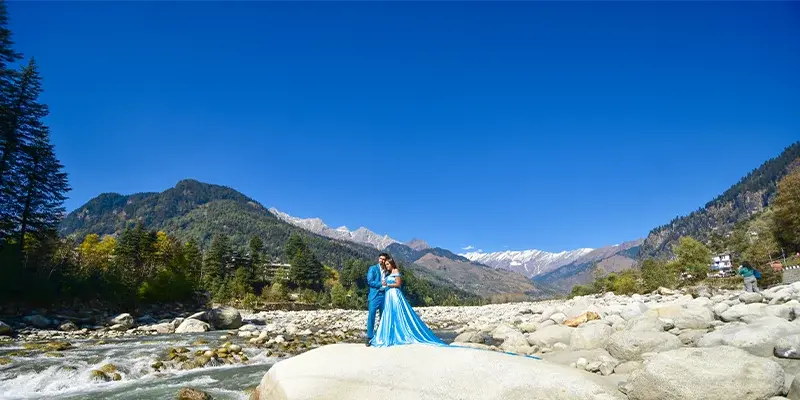

Tucked away in Himachal Pradesh like a well-kept secret, Tirthan Valley has a past that feels like a whispered legend. Named after the Tirthan River, which flows down from glacial origins near the Great Himalayan National Park (GHNP), the valley once served as a tranquil shelter for farmers, shepherds, and wandering monks.
Centuries ago, sages and villagers treated this ...

Images Of Kullu
Experience Kullu’s rivers, mountains and culture through images
Images Of Kullu
💸 Carry Cash – Seriously!
No ATMs in Tirthan. Bring enough for food, stay, and transport. Cards rarely work.
📶 Weak Signal – Strong Connection (to Nature)
Mobile data is patchy, and Wi-Fi is rare. Unplug and let the birds be your playlist.
🚯 Respect the Forest – Leave No Trace
Tirthan’s beauty lies in its purity. Don’t litter, carry reusable bottles, and skip plastic.
🏕️ Book Early During Peak Months
April–June and Sept–Nov get busy. Homestays fill up fast. Book your room and ride in advance.
🥾 Good Shoes Are Gold
You’ll walk... a lot. So carry trekking shoes with grip. No flip-flops, please.
🔋 Power Banks > Power Cuts
Electricity is stable, but occasional cuts happen. Carry a power bank for phones/cameras.
🍲 Eat Like a Local
Try Siddu, Lingri, Madra, and trout fry. Say yes when they offer homemade butter.
🛏️ It’s Rustic, Not Fancy
This isn’t a resort destination. Expect wooden rooms, warm blankets, and a welcome hug from the hosts.
👨🦯 Take a Local Guide
If you plan to trek deeper into GHNP or hidden waterfalls, hire a local. They know the trails—and the tales.
🌌 Don’t Miss the Stars
Clear skies = Milky Way views. Lay on the terrace, wrap in a blanket, and stare upward. It’s free therapy.
Best time to visit Tirthan Valley is from March to June and September to November for clear weather, green landscapes, and peaceful mountain vibes.
Tucked away in Himachal Pradesh like a well-kept secret, Tirthan Valley has a past that feels like a whispered legend. Named after the Tirthan River, which flows down from glacial origins near the Great Himalayan National Park (GHNP), the valley once served as a tranquil shelter for farmers, shepherds, and wandering monks.
Centuries ago, sages and villagers treated this land as sacred—‘Tirth’ means pilgrimage. The forests were untouched, the skies untouched by wires, and the river? Cold, pure, and healing. For the longest time, the valley was disconnected from the outside world. No tourists. No cars. No electricity.
Only in the 1990s did curious travelers begin to trickle in—many drawn by the introduction of trout farming in the river and the promise of silence, starlight, and soul-soothing solitude. Since then, Tirthan has grown into a slow, meaningful travel destination—still untouched by the chaos of commercial tourism.
🏞️ UNESCO Recognised Beauty
The valley lies in the buffer zone of the Great Himalayan National Park, a UNESCO World Heritage Site full of endangered species and unexplored trails.
🎣 Trout Capital of Himachal
Brown and rainbow trout swim freely in the river. You can fish, or just watch locals expertly hook their dinner before sundown.
🏡 No ATMs, No Malls – Just Peace
There are no ATMs or mega hotels here. What you will find are wood-heated cottages, cozy homestays, and steaming cups of local chai.
📶 Digital Detox Zone
Network? Maybe. Peace? Guaranteed. You’ll barely get a signal—and that’s the beauty of it. It’s nature’s way of saying, “Look up.”
🏔️ Home to Endangered Wildlife
Rare species like the Western Tragopan, Himalayan Tahr, and Black Bear call this valley home. Birdwatchers, rejoice!
🪵 Traditional Wooden Architecture
Homes are still built in the Kath-Kuni style—wooden beams stacked without cement, earthquake-resistant, and soulfully Himachali.
🔥 Evenings Are for Bonfires, Not Bars
Forget nightlife. Here, the stars shine brighter, and the only “DJ” is the crackling bonfire and the sound of the river nearby.
🌲 The locals speak of a time when sages meditated along the riverbanks and forests were guarded by spirits. They say a holy sadhu once touched the river and declared it a path to purity—thus giving it the name ‘Tirthan’, meaning sacred crossing.
🚶♂️ Travelers talk about coming here for a weekend, only to stay for weeks, hypnotized by the fog, the forests, and the feeling of being truly alive. One story goes that a man from Delhi opened a book café here after falling in love with the village’s stillness.
🧘 There’s a gentle magic in Tirthan that doesn’t shout—it whispers, waits, and then wraps around your soul. Everyone leaves with a story—some with photographs, others with changed hearts.
Hilly terrain is a dynamic landscape characterized by rolling or steep slopes, varying elevations, and a mix of hills, ridges, valleys, and plateaus. These features are the result of geological processes such as tectonic movements, erosion, and weathering over time.